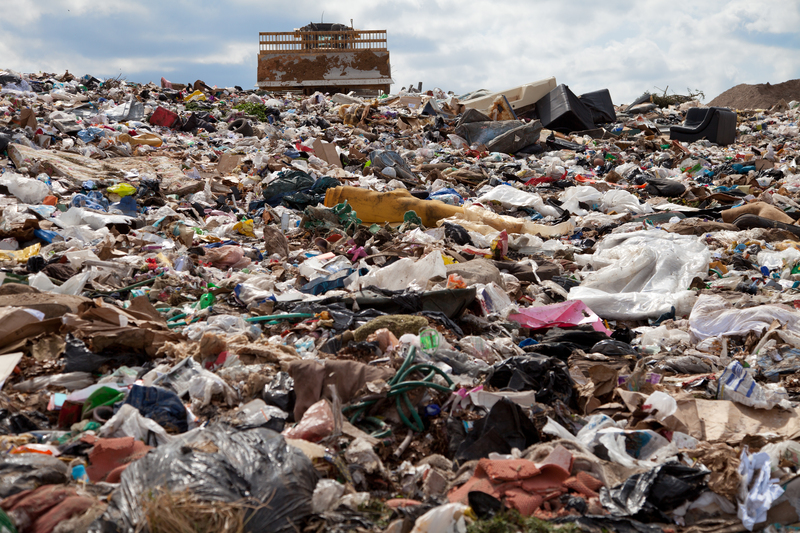Demystifying the Labeling of Hazardous Waste: A Comprehensive Guide
Hazardous waste labeling is a crucial component of environmental protection, regulatory compliance, and workplace safety. However, the labeling process is often shrouded in confusion for businesses, laboratory managers, and environmental professionals alike. In this comprehensive article, we will demystify hazardous waste labeling, breaking down regulations, best practices, and common challenges. Whether you're seeking to enhance compliance or improve safety outcomes, this guide will clarify everything you need to know about labeling hazardous waste effectively.

Why Is Hazardous Waste Labeling Important?
Properly labeling hazardous waste is not just a regulatory requirement--it's a matter of public health, environmental protection, and worker safety. Incorrect or inadequate labeling can lead to:
- Regulatory fines and penalties
- Environmental contamination
- Increased risk of workplace accidents and injuries
- Mismanagement and improper storage of dangerous substances
- Poor emergency response and cleanup inefficiencies
Labels serve as the first line of communication regarding the risks and requirements associated with hazardous waste containers.
The Regulatory Framework for Hazardous Waste Labeling
Multiple agencies and regulations govern the labeling of hazardous waste. Understanding these regulations is essential for any organization generating, storing, transporting, or disposing of hazardous waste.
Key Regulations and Agencies
- EPA (Environmental Protection Agency) -- Resource Conservation and Recovery Act (RCRA)
- OSHA (Occupational Safety and Health Administration) -- Hazard Communication Standard (HCS)
- DOT (Department of Transportation) -- Hazardous Materials Regulations
- State and Local Requirements -- May have stricter regulations
Hazardous waste marking and labeling regulations set forth by these agencies are designed to ensure uniformity, legibility, and hazard awareness throughout the waste management process.
The Essentials of Hazardous Waste Labels
At its core, a hazardous waste label must clearly communicate the nature and severity of the waste contained within the package, drum, tank, or container. The following elements are typically required:
The "Hazardous Waste" Phrase
Each label must include the words "Hazardous Waste" in large, clear letters. This signals to handlers, emergency responders, and inspectors the potential risks associated with the container's contents.
Description of Contents
Specific *identification of the waste* is mandatory. This may include:
- Chemical names (e.g., Acetone, Benzene)
- Physical state (solid, liquid, sludge)
- Relevant hazard classes (ignitable, reactive, corrosive, toxic)
Generator Information
The name, address, and contact details of the generator (the party producing the waste) must appear on the label. This allows traceability and accountability throughout the waste management lifecycle.
Accumulation Start Date
The accumulation start date is critical, as it marks the moment the waste begins to be stored onsite. Permitted accumulation periods (usually 90 or 180 days) are measured from this date, so accuracy is paramount.
Physical and Health Hazards
Many regulations require the principal hazards--such as flammability, toxicity, or corrosivity--to be notated. Secondary labels or pictograms (such as GHS/OSHA symbols) enhance hazard recognition.
Unique State Requirements
Many states require extra labeling details--such as unique waste codes or special handling instructions--over and above federal rules. Always consult your state's environmental agency for tailored guidance.
Container Types and Label Placement
The requirements for hazardous waste labels apply to a wide variety of containers and storage vessels, including:
- Drums and barrels
- Bags and boxes
- Tanks and totes
- Small laboratory containers
Labels should be:
- Affixed firmly to the container surface
- Visible and legible from a distance
- Weather-resistant (for outdoor storage)
- Updated immediately if any information changes
Never place your label on the container lid alone, as it may be separated from the contents.
Color Coding and Symbols
Although not always required, color-coding and pictograms help communicate the hazard class at a glance. For example:
- Red = Flammable
- Yellow = Reactive
- Blue = Health Hazardous
- White/Black = Corrosive
Best Practices in Hazardous Waste Labeling
Successful compliance relies on more than just meeting minimum requirements. Adopting best practices reduces risk, streamlines inspections, and avoids costly remediations.
Standardize Labeling Procedures
- Develop internal templates and checklists for waste labels
- Train employees and contractors on consistent label use
- Maintain a stock of durable labels and markers
Conduct Regular Label Audits
- Periodically inspect waste storage areas for label accuracy
- Update or replace labels as soon as information changes
- Document audits and corrective actions taken
Use Technology Where Appropriate
- Implement barcode systems for easier tracking
- Consider digital apps to manage label data and regulatory deadlines
Foster a Safety-Conscious Culture
- *Encourage proactive communication* when waste types, amounts, or locations change
- Reward staff for identifying label discrepancies or risks
Common Pitfalls in Hazardous Waste Labeling
Errors and oversights in hazardous waste labeling can carry severe repercussions. The most frequent pitfalls include:
- Missing or incomplete labels on hazardous waste containers
- Inaccurate accumulation start dates
- Illegible handwriting or damaged labels
- Unapproved abbreviations or chemical codes
- Failure to update information when contents change
Routine training and auditing help mitigate these risks and promote continuous improvement in hazardous waste labeling protocols.
Hazardous Waste Labeling in Laboratories
One of the most complex environments for hazardous waste labeling is the laboratory setting. Labs generate a wide variety of chemical wastes, often in small, disparate quantities. Special considerations for laboratory hazardous waste labeling include:
- Listing all contents (not just major constituents)
- Employing secondary containment and labeling for satellite accumulation
- Periodic consolidation and relabeling of accumulated containers
- Rapid response to accidental spills or cross-contamination
*Investing in pre-printed, chemical-resistant labels* streamlines compliance and minimizes error in the hectic lab environment.
"Unknown" Waste: What To Do?
It is never acceptable to use a vague label (e.g., "Unknown" or "Waste Solvent"). Instead, efforts must be made to:
- Identify the composition (via record review or characterization testing)
- Label the waste accurately, even if major components are only estimated
Shipping and Off-Site Transportation Labeling
When hazardous waste is shipped offsite--for treatment, storage, or disposal--additional labeling and marking requirements apply. These rules are governed mainly by DOT regulations and international agreements (such as the IMDG code for maritime shipping).
Transport-Specific Markings
Off-site containers or packages must feature:
- UN-number and proper shipping name
- DOT hazard class labels (with correct symbols and colors)
- Emergency contact phone number

Evolving Regulations: Staying Compliant Amid Change
Hazardous waste labeling regulations are regularly updated in response to advances in science, safety data, and international standards. For example, integration of GHS (Globally Harmonized System) pictograms is increasingly common.
Tips for staying up-to-date:
- Subscribe to EPA and OSHA regulatory newsletters
- Engage with professional associations and compliance consultants
- Participate in ongoing staff training and certification programs
Conclusion: Mastering Hazardous Waste Labeling for Safety and Compliance
Understanding the nuances of hazardous waste labeling is vital for every organization that handles dangerous materials. Accurate, durable labeling protects your employees, your organization, and the environment. By internalizing regulatory requirements, adopting best practices, and avoiding common pitfalls, you ensure a safer, more efficient hazardous waste management system.
Remember:
- Correct labeling is a legal requirement and a critical communication tool
- Comprehensive hazardous waste labels must include the proper heading, content identification, hazard warnings, and relevant dates
- Regular training and auditing safeguard against compliance drift
Stay informed, stay compliant, and keep hazardous waste risks to a minimum by making labeling excellence a cornerstone of your waste management strategy.
Further Reading and Resources
- EPA Hazardous Waste Generators
- OSHA Hazard Communication Standard
- DOT Hazardous Materials Transportation
By following the guidelines for hazardous waste labeling and staying proactive, you can ensure safety and compliance for your entire organization.